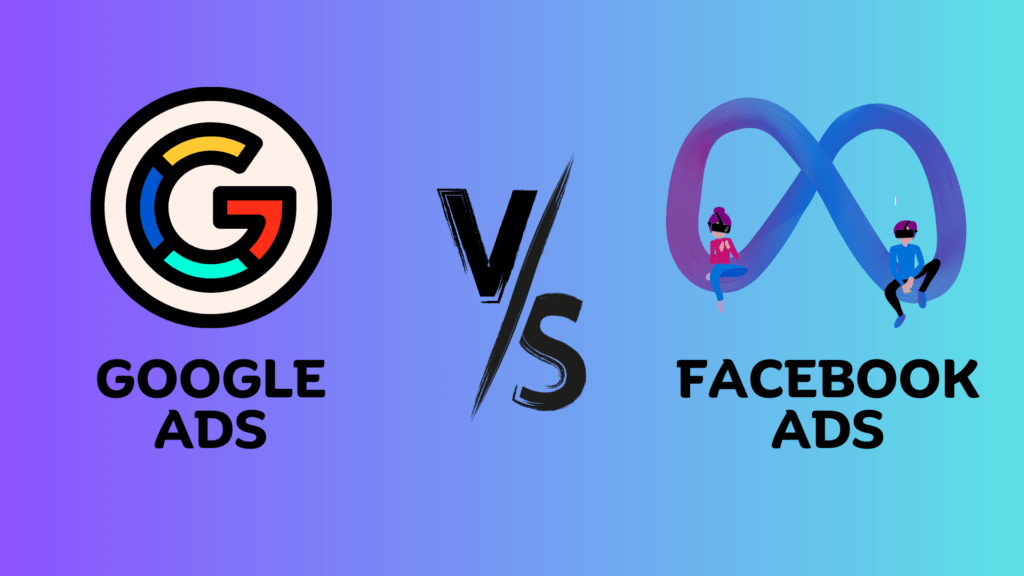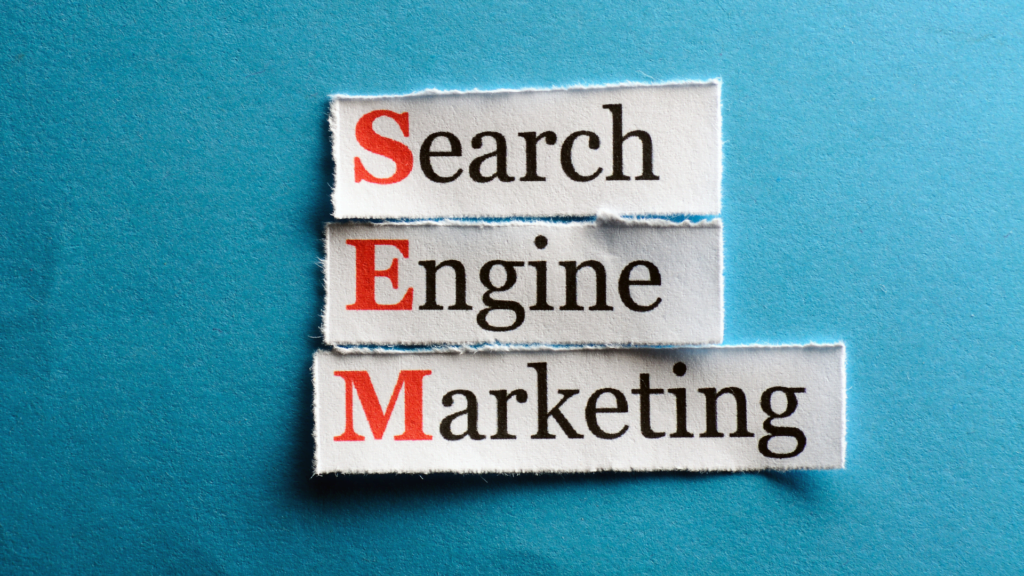Introduction
In the dynamic landscape of digital marketing, two giants stand tall—Google Ads vs. Facebook Ads. Both platforms offer unique advantages and cater to different audiences, making the choice between them a critical decision for businesses. In this comprehensive comparison, we will delve into the key features, targeting options, costs, and overall effectiveness of Google Ads vs. Facebook Ads to help you make an informed decision for your advertising strategy.
Understanding Google Ads
Overview
Google Ads, formerly known as Google AdWords, is the advertising platform developed by Google. It operates on a pay-per-click (PPC) model, allowing businesses to display ads on the Google Search Network and Google Display Network.
Key Features
1. Search Network Ads: Google Ads primarily serves ads on the search engine results pages (SERPs), allowing businesses to appear at the top of relevant search queries.
2. Display Network: Businesses can leverage Google’s extensive Display Network to showcase visual ads on various websites and apps across the internet.
3. Keyword Targeting: Google Ads enables precise targeting based on keywords, ensuring that your ads are displayed to users actively searching for products or services related to your business.
4. Ad Extensions: Businesses can enhance their ads with additional information like location, phone number, and site links using ad extensions.
Understanding Facebook Ads
Overview
Facebook Ads is the advertising platform offered by the social media giant, Facebook. With a user base exceeding 2.8 billion monthly active users, Facebook Ads provides a massive audience for businesses looking to promote their products or services.
Key Features
1. Audience Targeting: Facebook Ads excels in audience targeting, allowing advertisers to define their audience based on demographics, interests, behavior, and even custom audiences.
2. Visual Content: As a social media platform, Facebook emphasizes visual content, making it an ideal space for businesses to showcase engaging images and videos in their ads.
3. Ad Formats: Facebook offers a variety of ad formats, including photo ads, video ads, carousel ads, and more, giving businesses creative flexibility.
4. Social Engagement: Facebook Ads provide opportunities for users to engage with ads through likes, comments, and shares, fostering a sense of community around the brand.
Targeting Options: Precision vs. Personalization
Let’s discuss targeting options comparison between Google Ads vs. Facebook Ads:
Google Ads Targeting
1. Keyword Targeting: Google Ads relies on users’ search queries, ensuring that your ads reach individuals actively looking for relevant products or services.
2. Location and Device Targeting: Businesses can target users based on their location and device, optimizing ad delivery for specific regions and devices.
Facebook Ads Targeting
1. Demographic Targeting: Facebook Ads offer detailed demographic targeting, allowing businesses to reach specific age groups, genders, and interests.
2. Custom Audiences: Facebook Ads enable advertisers to target custom audiences based on website visitors, email subscribers, or individuals who have engaged with the brand on Facebook.
Costs and Budgeting
Let’s discuss costs and budgeting comparison between Google Ads vs. Facebook Ads:
Google Ads
1. Auction System: Google Ads uses a competitive auction system where advertisers bid for ad placements based on their chosen keywords.
2. Cost-Per-Click (CPC): Advertisers pay for each click on their ads, and the CPC can vary based on competition for the chosen keywords.
3. Budget Control: Google Ads provides flexibility in budget control, allowing businesses to set daily or campaign-level budgets.
Facebook Ads
1. Bid Types: Facebook Ads offer various bidding options, including cost-per-click (CPC), cost-per-thousand-impressions (CPM), and cost-per-engagement (CPE).
2. Ad Auction: Similar to Google Ads, Facebook Ads use an auction system, with advertisers bidding for their ad to be shown to their target audience.
3. Budget Flexibility: Advertisers can set daily or lifetime budgets, giving them control over their spending.
Ad Performance and Analytics
Let’s discuss ad performance and analytics comparison between Google Ads vs. Facebook Ads:
Google Ads
1. Conversion Tracking: Google Ads provides robust conversion tracking tools, allowing businesses to measure the effectiveness of their ads in terms of desired actions.
2. Google Analytics Integration: Businesses can integrate Google Ads with Google Analytics to gain deeper insights into user behavior and optimize their campaigns accordingly.
Facebook Ads
1. Pixel Tracking: Facebook Pixel allows businesses to track user interactions on their website, measure conversions, and optimize ad delivery.
2. Ad Reporting: Facebook Ads provides detailed ad performance reports, including metrics like reach, engagement, and conversion rates.
Effectiveness for Different Business Goals
Google Ads
1. Search Intent: Google Ads is highly effective for businesses looking to capture users with high search intent, as ads appear when users actively search for relevant keywords.
2. Direct Response: Google Ads is well-suited for direct response campaigns, driving immediate actions such as purchases or form submissions.
Facebook Ads
1. Brand Awareness: Facebook Ads excel in building brand awareness through visually appealing content and engagement opportunities.
2. Community Building: Businesses can foster a sense of community and engagement through Facebook Ads, leveraging social interactions.
Ad Format and Creativity
Let’s discuss ad format and creativity comparison between Google Ads vs. Facebook Ads:
Google Ads
1. Text-Based Ads: Google Ads primarily relies on text-based advertisements, limiting the creative elements to compelling ad copy and strategically placed keywords.
2. Display Network Options: While Google Ads does offer visual ads through its Display Network, the creative elements are often secondary to the text-based nature of search ads.
Facebook Ads
1. Visual Emphasis: Facebook Ads place a strong emphasis on visual content, allowing businesses to leverage striking images and videos to capture the attention of their target audience.
2. Diverse Ad Formats: Facebook provides a variety of ad formats, including carousel ads, slideshow ads, and immersive story ads, offering businesses creative flexibility to showcase their products or services.
Ad Placement and Context
Let’s discuss ad placement and context comparison between Google Ads vs. Facebook Ads:
Google Ads
1. Contextual Targeting: Google Ads primarily relies on contextual targeting, displaying ads based on the context of users’ search queries and the content of websites within the Google Display Network.
2. Search Engine Placement: Google Ads prominently places ads on the search engine results pages (SERPs), ensuring visibility when users actively search for relevant information.
Facebook Ads
1. Social Platform Integration: Facebook Ads are seamlessly integrated into the social media platform, appearing in users’ news feeds and on the sidebar, aligning with the social context of the platform.
2. Native Advertising: Facebook Ads blend in with users’ social interactions, providing a native advertising experience that feels organic within the social media environment.
Ad Approval Process
Let’s discuss ad approval process comparison between Google Ads vs. Facebook Ads:
Google Ads
1. Stringent Editorial Guidelines: Google Ads enforces strict editorial guidelines to ensure the quality and relevance of ads, with a thorough review process before ads go live.
2. Keyword Relevance: Advertisements on Google Ads are subject to keyword relevance, with a focus on aligning ad content with users’ search intent.
Facebook Ads
1. Image and Content Review: Facebook Ads undergo a review process that evaluates the visual content, ad copy, and adherence to community standards, ensuring a positive user experience.
2. Audience Targeting Compliance: Facebook Ads must comply with guidelines related to audience targeting, prohibiting discriminatory practices and ensuring ethical targeting practices.
Ad Retargeting Capabilities
Let’s discuss ad retargeting capabilities comparison between Google Ads vs. Facebook Ads:
Google Ads
1. Remarketing Lists: Google Ads offers robust remarketing capabilities, allowing businesses to create customized remarketing lists based on user behavior and website interactions.
2. Dynamic Remarketing: Google Ads enables dynamic remarketing, showcasing personalized ads to users based on their previous interactions with specific products or services.
Facebook Ads
1. Facebook Pixel: Facebook Ads leverage the Facebook Pixel for retargeting, enabling businesses to track user interactions on their website and deliver tailored ads to individuals who have shown interest.
2. Custom Audiences: Facebook Ads allow businesses to create custom audiences for retargeting, segmenting users based on their interactions with the brand on Facebook and other platforms.
By exploring these additional differences, businesses can gain a more nuanced understanding of the distinctive features offered by Google Ads vs. Facebook Ads, helping them make informed decisions based on their unique marketing goals and preferences.
Integrating Both Platforms
Synergies
1. Full Funnel Approach: Combining Google Ads and Facebook Ads allows businesses to create a comprehensive marketing strategy, targeting users at different stages of the customer journey.
2. Cross-Platform Remarketing: Businesses can use remarketing strategies across both platforms, reinforcing their brand messaging to users who have previously engaged with their ads.

Conclusion: Google Ads vs. Facebook Ads
In the ever-evolving landscape of digital advertising, the choice between Google Ads vs. Facebook Ads is a pivotal decision for businesses seeking effective online visibility and audience engagement. Each platform boasts distinct strengths, catering to diverse marketing objectives and target audiences.
Google Ads stands out as a powerhouse for businesses focused on capturing users with high search intent. Its text-based ads dominate the search engine results pages (SERPs), making it a go-to platform for those seeking immediate and direct responses. The emphasis on keyword targeting, coupled with a versatile display network, ensures businesses can reach potential customers precisely when they are actively searching for relevant products or services.
On the other hand, Facebook Ads shines as a platform that excels in audience targeting and brand building. With a user base exceeding billions, Facebook offers unparalleled demographic and interest-based targeting options. The visual-centric nature of the platform, coupled with diverse ad formats, provides businesses with the creative flexibility to showcase their offerings in engaging and visually appealing ways. Facebook Ads fosters social engagement, creating opportunities for businesses to build communities around their brands.
However, the decision doesn’t have to be an either-or scenario. Integrating both Google Ads and Facebook Ads into a comprehensive marketing strategy can be a game-changer. By doing so, businesses can leverage the strengths of each platform, reaching users at various stages of the customer journey. The full-funnel approach allows for a more holistic and effective marketing strategy, combining the precision of search intent targeting with the broad reach and engagement capabilities of a social media giant.
Furthermore, businesses can benefit from cross-platform remarketing, reinforcing their brand messaging to users who have interacted with their ads on either Google or Facebook. This seamless integration provides a more cohesive and impactful user experience, fostering brand recognition and loyalty.
In conclusion, the choice between Google Ads vs. Facebook Ads hinges on understanding your business goals, target audience, and the unique strengths each platform offers. Whether aiming for direct response through search intent targeting or building a brand presence through social engagement, the key lies in crafting a well-rounded digital marketing strategy that leverages the strengths of both Google Ads and Facebook Ads. As the digital landscape continues to evolve, businesses that adapt and embrace the synergies between these platforms will likely find themselves at the forefront of online success.





Nice post. I was checking constantly this blog and I am impressed! Extremely useful info specially the last part 🙂 I care for such information much. I was seeking this particular information for a long time. Thank you and good luck.
Your article helped me a lot, is there any more related content? Thanks!
Can you be more specific about the content of your article? After reading it, I still have some doubts. Hope you can help me.
Thanks for sharing. I read many of your blog posts, cool, your blog is very good.
Your point of view caught my eye and was very interesting. Thanks. I have a question for you. https://www.binance.com/lv/register?ref=B4EPR6J0
Thank you for your sharing. I am worried that I lack creative ideas. It is your article that makes me full of hope. Thank you. But, I have a question, can you help me? https://accounts.binance.com/vi/register?ref=WTOZ531Y